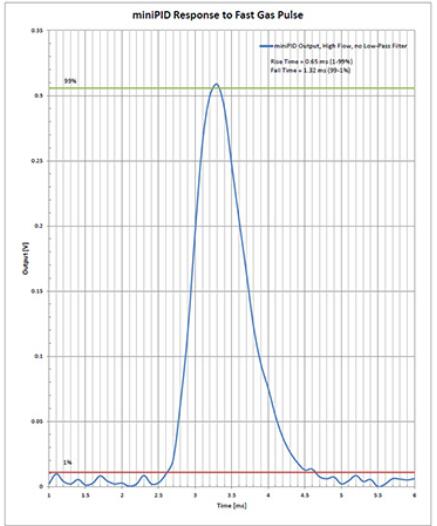200B: miniPID Dispersion Sensor
型号:200B
价格:请致电:010-67529703
品牌:aurorascientific
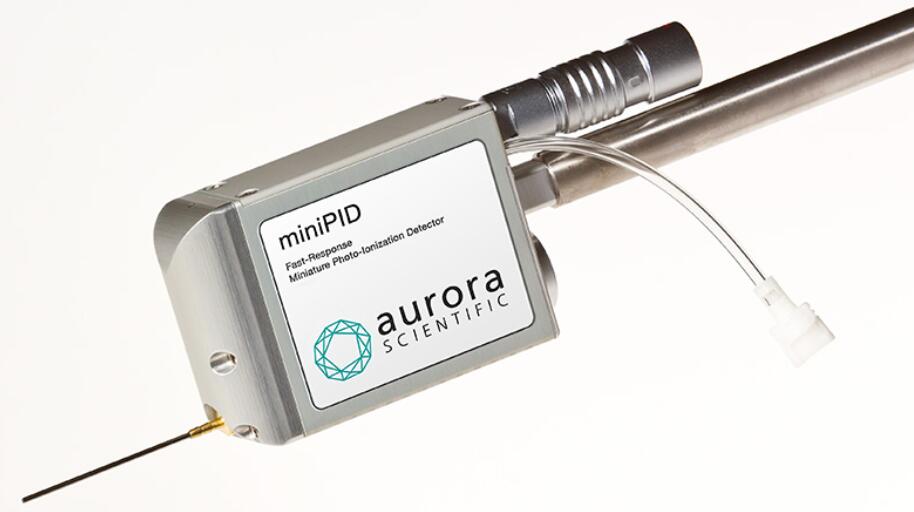
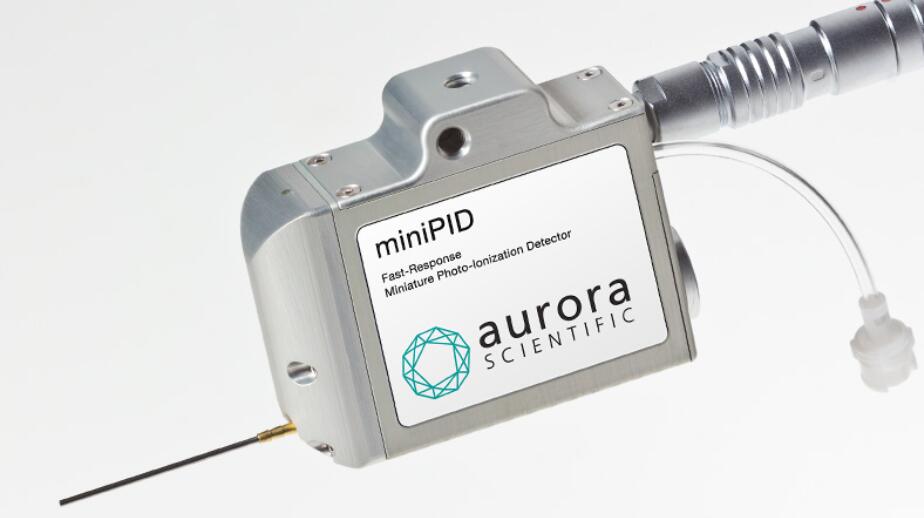
Overview
The 200B miniPID photo-ionization detector combines small size, fast response, and high sensitivity in an easy-to-use, competitively priced package. The miniPID has been designed to provide high frequency concentration measurements for plume tracking both in wind tunnels and in the atmosphere. The sensor has a true frequency response of 330 Hz with a rise time of 0.6 msec. The detection limit is 100 ppb (parts per billion) propylene in air with a full-scale measurement range of 500 ppm.
The miniPID has been used successfully for outdoor concentration fluctuation field trials at the U.S. Army Dugway Proving Ground, for tracing biological simulants, evaporation studies, heavy gas studies and building infiltration studies. The sensor has been employed in numerous wind tunnel studies at private companies and at various universities. It has even been combined with hot-wire anemometers to create a scalar transport probe (Metzger and Klewicki, University of Utah). More recently, our battery-powered version (model 201A) has been used for plume tracking while mounted on a wheeled robot. In all testing environments, the sensor proved to be easy-to-use, reliable, and robust.
The sensor head contains the detection cell, electrometer, RF-excited UV lamp and lamp control circuitry. A simple operating panel has switches for instrument power, pump speed and gain, and a control for setting the zero. LEDs provide indication of power, pump, and lamp status. A front-panel display provides fast-response indication of the output signal from the sensor.
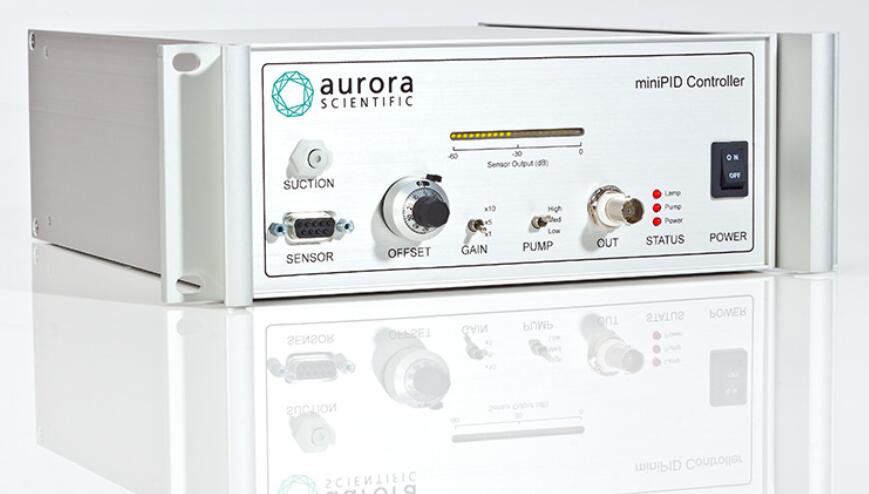
Features
Sensor
- compact (sensor head measures 1″ x 2″ x 3″)
- fast response – 330 Hz (0.6 m sec rise time)
- low detection limit – 100 ppb (propylene in air)
- high signal-to-noise ratio
- ease of use – utilizes RF-excited UV lamp
- robust
Controller
- simple analog output (0 – 10V)
- real-time bar-graph display with off-scale indicators
- built-in anti-aliasing filter (6th order, 1 kHz, Butterworth)
Optional Support Equipment
- calibration kit
- data acquisition system
- tracer gas release system
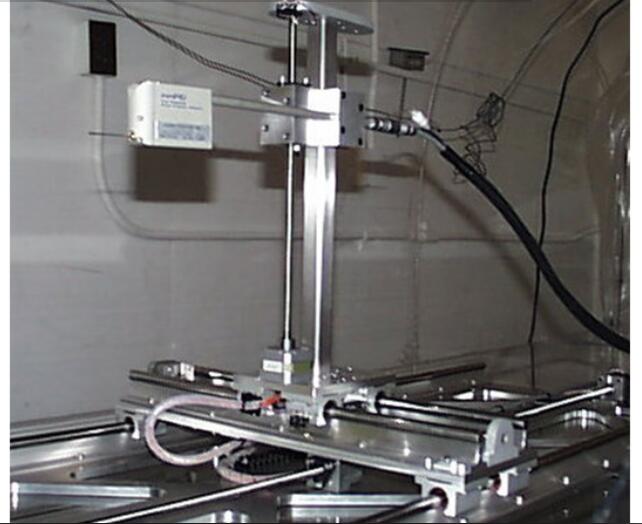
Case Studies
200B – Development of a Scalar Transport Probe
Challenge
In 1997 Dr. Klewicki from the University of Utah and his team were working with hot wire anemometers to measure turbulence in the atmosphere. They became aware of Aurora Scientific’s work with fast response chemical sensors and approached us about developing a scalar transport probe. This was a device that could simultaneously measure turbulence and gas concentration. They required a gas sensor that was very small so as to not disturb the flow at the measurement location. It also needed to have high frequency response to allow correlation of the high frequency turbulence measurements with the concentration fluctuations. A final requirement was high spatial resolution in order to resolve the concentration fluctuations on a scale similar to that provided by the hot-wire anemometers.
Solution
Aurora Scientific’s R&D team had significant experience with fast response photoionization sensors but realized that a new instrument was required. Thus we started work on the 200B miniPID. To meet the requirement for small size the sensor head was separated from the more bulky control electronics. Work was done to miniaturize the sensor head and also to increase the frequency response of the sensor. A unique detector circuit board was designed which improved frequency response with the added advantages of reducing noise and making the sensor less susceptible to noise from movement and vibration. Prof. Klewicki provided details of the physical layout of the hot wire probes and requirements for mounting the sensor. This information was used to design the sensor case. Because of the importance of not disturbing the flow near the sampling point we used a fine needle as the inlet and rounded the case to minimize flow disturbances.
Results
The new sensor was delivered to the Klewicki lab where it was successfully used during outdoor field trials on the mud flats at Dugway Proving Ground in the fall of 1999. Data was also taken in a wind tunnel at the University of Utah. A paper was published (M M Metzger and J C Klewicki 2003 Meas. Sci. Technol. 14 1437. doi:10.1088/0957-0233/14/8/333) in Measurement Science and Technology describing the scalar transport probe and presenting results from the wind tunnel and outdoor experiments. Since that time miniPID sensors have been used in numerous wind tunnel and outdoor experiments looking at concentration fluctuations in dispersing plumes and in plume tracking studies.
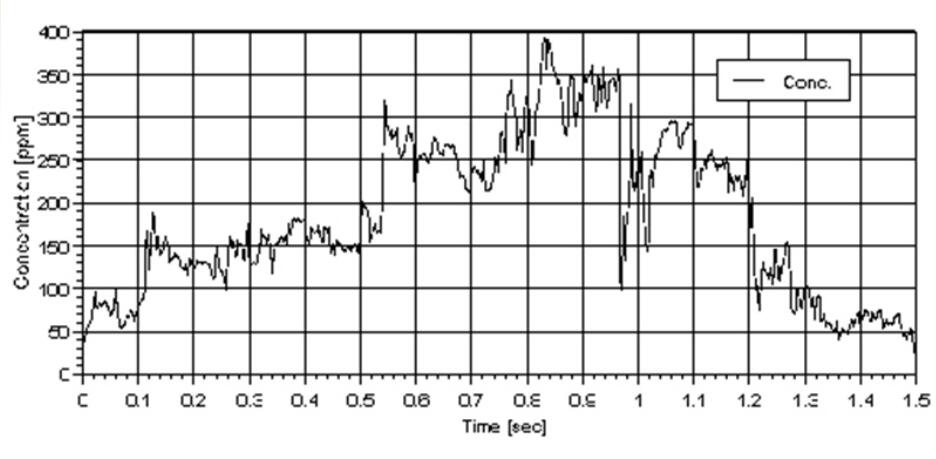
Citations
Santos, J. M. et al. “Experimental investigation of outdoor and indoor mean concentrations and concentration fluctuations of pollutants.” Atmospheric Environment 45.36 (2011): 6534-6545.
Girling, Robbie D. and Ring T. Cardé. “Analysis and manipulation of the structure of odor plumes from a piezo-electric release system and measurements of upwind flight of male almond moths, Cadra cautella, to pheromone plumes.” Journal of Chemical Ecology 33.10 (2007): 1927-1945.
Harvey, David J. “An investigation into insect chemical plume tracking using a mobile robot.” Dissertation. The University of Adelaide (2007): 1-152.
Brown, W. A. et al. “Thermal blending time associated with a charge of hot particles added to a fluidized bed of uniform temperature.” The Canadian Journal of Chemical Engineering 84.3 (2006): 269-278.
Bailey, Justin K., Mark Willis, and Roger D. Quinn. “A multi-sensory robot for testing biologically-inspired odor plume tracking strategies.” Proceedings, 2005 IEEE/ASME International Conference on Advanced Intelligent Mechatronics (2005): 1477-1481.
Metzger, Meredith M., and Joe C. Klewicki. “Development and characterization of a probe to measure scalar transport.” Measurement Science and Technology 14.8 (2003): 1437.
Justus, Kristine A. et al. “Measurement of odor-plume structure in a wind tunnel using a photoionization detector and a tracer gas.” Environmental Fluid Mechanics 2.1-2 (2002): 115-142.
